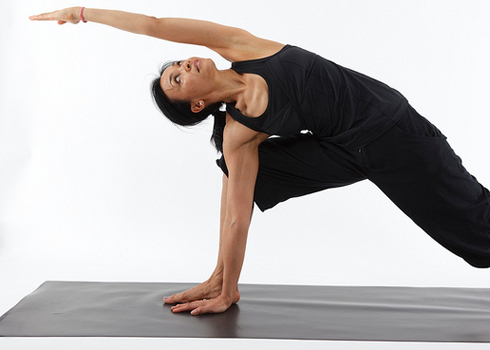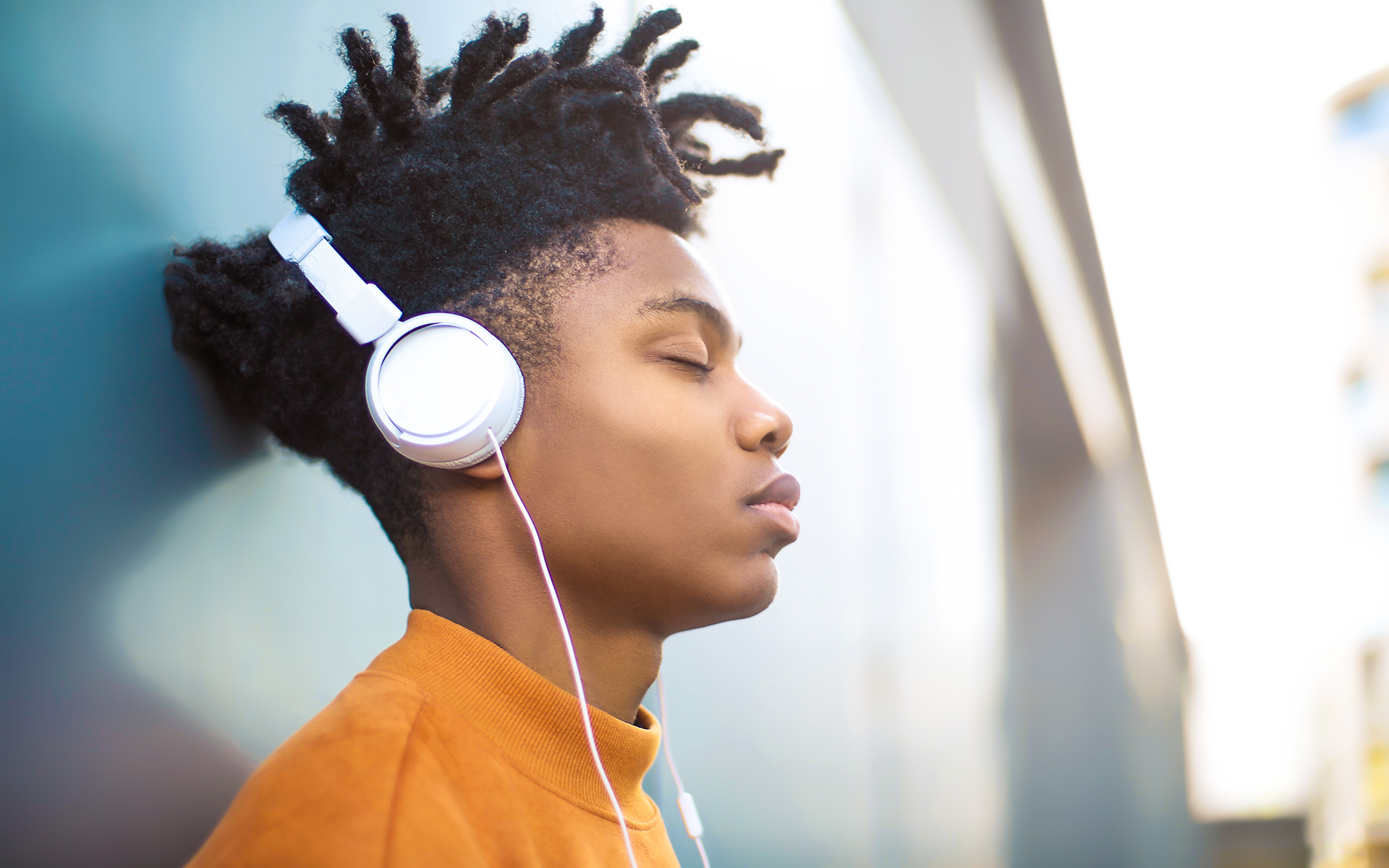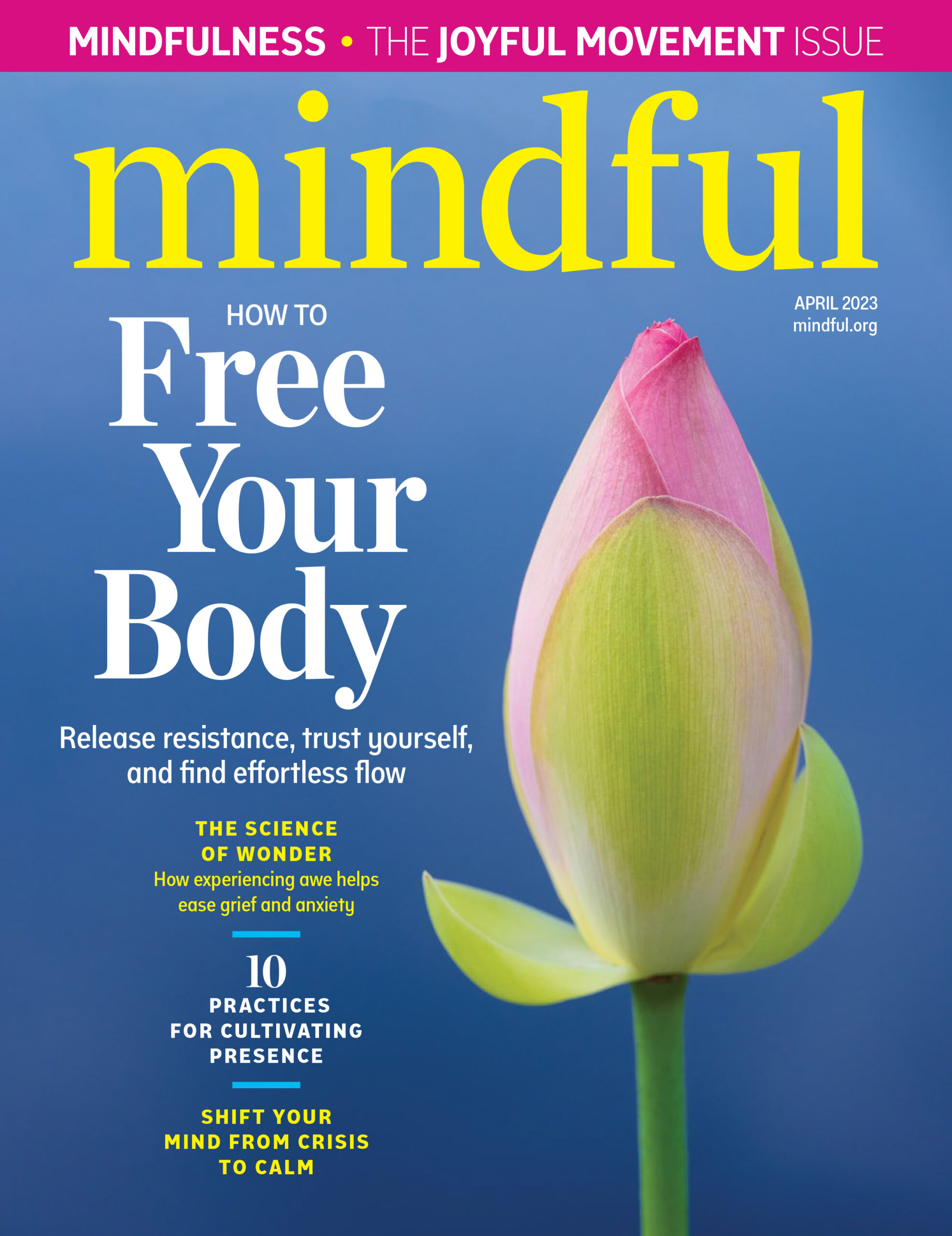In the spring of 1893, an Indian swami named Vivekananda traveled to the U.S. hoping to participate in the World Parliament of Religions, which was being convened as a part of Chicago’s World Fair. And though he had no official invitation, participate he did. According to the Boston Evening Transcript, “Four thousand fanning people in the Hall of Columbus would sit smiling and expectant, waiting for an hour or two of other men’s speeches to listen to Vivekananda for fifteen minutes.”
Perhaps one key to Vivekananda’s popularity was that he at once fulfilled and debunked Indian stereotypes, enabling Americans to romanticize him and his country without abandoning too many of their own values. For his lectures, the young swami decked himself out in scarlet or orange robes and a yellow turban. Yet he spoke fluent, articulate English, ate meat and ice cream, and used snuff, which he hawked copiously on the floor.
In his talks, Vivekananda never used the word “yoga,” a curious fact in light of some current scholarship which proposes that modern, transnational yoga began with him. Moreover, Vivekananda did not contort himself into the bow pose or any other asana. In India a yoga revival connected with Indian nationalism was in full swing, and Vivekananda was an advocate of the movement. But he avoided the word “yoga” because he thought Westerners would find it too foreign and frightening, and he avoided hatha yoga altogether because—along with the majority of his compatriots—he found it distasteful and wholly unsuitable for the yoga revival.
Today yoga has a large following in the West and many consider it synonymous with posture practice. How has hatha yoga, specifically asana practice, taken center stage, and what role has the West played in that? These are questions addressed in two new releases: Yoga Body: The Origins of Modern Posture Practice,by Mark Singleton, and The Subtle Body: The Story of Yoga in America,byStefanie Syman.
Yoga Body begins by examining perceptions of hatha yoga before and during Vivekananda’s time. Singleton writes:
At the time of Vivekananda’s synthesis of yoga in the 1890s, postural practice was primarily associated with the yogin(or more popularly, “yogi”). This term designated in particular the hatha yogins of the Nath lineage, but was employed more loosely to refer to a variety of ascetics, magicians, and street performers. Often confused with the Mohammedan “fakir,” the yogi came to symbolize all that was wrong in certain tributaries of the Hindu religion. The postural contortions of hatha yoga were associated with backwardness and superstition.
It was poverty that made many hatha yogis resort to street performancefor their livelihood, and it was a new technology of the late eighteenth century—photography—that made Westerners familiar with what were to them the morbidly fascinating postural contortions of yogis. But posture practice actually played a relatively small role in pre-modern hatha yoga. Other practices, which today take a backseat in most yoga books and classes, were more strongly emphasized. For instance, one practice that was pivotal to pre-modern yoga, yet is rarely taught at the average North American studio, is the six purifications, or satkarmas. These include dhauti, cleansing the stomach by swallowing a long strip of cloth, and basti, a yogic enema. Pranayama(yogic breathing) and mudra(ritual gestures) have also been largely relegated to the yoga backburner. Indeed, the very tantric physiology that underpins traditional hatha yoga plays only a minor role in popular contemporary practice.
In the 1890s, Victorian values left many Westerners unprepared for hatha and its emphasis on the body. But Vivekananda did a lot to warm up the West to yoga. Though he did not mention yoga by name at the parliament, in later lectures he did. From a hotel-turned-spiritual retreat center in Maine to a teak-paneled music room outside Harvard, Vivekananda explicitly instructed students in raja yoga. His approach, however, blurred traditions.
The swami claimed to teach from a purely Vedanta perspective and to be dismissive of hatha. Yet, without naming them, he quoted from the Yoga Sutras, which present a very different conception of divinity than Vedanta. And although Vivekananda skipped over asana, the third of Patanjali’s eight limbs, Syman says that he “introduced Kundalini and the subtle body, not of Vedanta, but the one more closely associated with hatha.” Into this mix, he inserted metaphysical jargon popular in the West at that time.
To be fair, India has a long history of blurring traditions, and Sri Ramakrishna, Vivekanada’s own teacher, floated from tantra to Vedanta and was extremely hard to pin down on how yoga ought to be practiced. This left Ramakrishna’s students leeway for interpretation, which brings us to another of his direct disciples, Swami Abhedananda. When Vivekanada returned to India, he sent Abhedananda to America in his stead, but Abhedananda deviated from Vivekananda’s teachings. He taught Americans hatha, including asanas such as the lotus pose and pachimottanasana, or seated forward bend.
Yoga was now ready for its marriage to the fitness movement that straddled the nineteenth and twentieth centuries. Mark Singleton takes a look at early popular yoga manuals in English:
The asanas of hatha yoga were commonly, indeed routinely, compared with gymnastics in these manuals. These interpretations of postural yoga were significantly divergent from those given by “classical” hatha yoga texts… Indeed, the whole somatic and philosophical framework of this new English-language yoga appeared to have been replaced by a modern discourse of health and fitness. An examination of the eighteenth- to early twentieth-century European gymnastics manuals in the British Library and Cambridge University Library showed without much doubt that Anglophone yoga authors had grafted elements of modern physical culture onto hatha yoga orthopraxy and seemingly excised those parts that were difficult to reconcile with the emerging health and fitness discourse.
Of especial relevance here are Scandinavian systems stemming from Ling, the [bodybuilding] teachings of Sandow, and the methods of the YMCA. These three were the major foreign players in the shaping of the modern physical culture in India and thereby also helped to determine the shape of the new hatha yoga syntheses.
Yoga in its physical culture stage also mingled with Indian nationalism. British colonial educators presented Indians as weaklings who deserved to be dominated, but, as chapter five of Yoga Bodyreveals, Indians subverted Britain’s game: they reworked European physical culture “as an ‘indigenous’ technique of man-building.” Indeed, says Singleton, “The practice of yoga, in certain milieux, became an alibi for training in violent, militant resistance.”
Another Western influence on yoga’s development was the more feminine face of physical culture, which Singleton calls “harmonial gymnastics.” These were esoteric systems of movement that were practiced in the early twentieth century, mainly by women, and underpinned by the idea that one’s spiritual well-being, physical health, and even economic circumstances had a direct connection to one’s rapport with the cosmos. Curiously, though the stretch and relax techniques were not called yoga, they resemble today’s transnational yoga more closely than the body-building forms that were identified as yoga at that time.
Perhaps it was inevitable that this East-West exchange of ideas would culminate in America’s first guru. Born in 1876, his name was Pierre Bernard, or rather that’s the name he—Perry Baker—adopted for himself. Another question he wouldn’t give a straight answer to was his hometown. It was Leon, Iowa, though by turns he claimed Paris, Chicago, and Des Moines as his origin. This much is true, however: as a youth, his family wanted him to apprentice with a millwright, but instead he apprenticed with a yogi who lived across the street from him.
Bernard first garnered public attention in 1898 when, witnessed by nearly forty physicians and surgeons, he demonstrated Kali-Mudra, the simulation of death. Syman describes a later photo of a similar event: “Bernard’s body is lax and blood dribbles out of his nose, as a physician, in black cutaway coat…fingers his wrist, looking for but not finding his pulse. Bernard had used pranayama to slow his heartbeat to imperceptibility.”
Bernard went on to launch yoga schools on both coasts, which were raided by police due to his supposed conduct with underage girls; the International School of Vedic and Allied Research, which was supported by renowned scholars; and the lucrative Clarkstown Country Club, which inserted yoga into its entertainment program. Bernard was an adept at asana and a learned tantric scholar, but it is unclear if he did more to promote hatha or to stain its reputation. He was notorious for his sex rites and philandering and, with heiresses bankrolling his projects, he was widely believed to be a con man.
Russian-born Indra Devi proved to be a more wholesome, yet wholly glamorous, proponent of yoga. According to Syman,
Devi’s near-immediate success in Los Angeles reads like some strange fairy tale: a virtually unknown middle-aged foreigner alights in the City of Angels to teach a relatively obscure type of yoga and is almost immediately patronized by the city’s biggest stars. But there wasn’t anything particularly unusual about the course of events. Devi had lived most of her life in the company of royalty of some sort and had the assuredness of wealth, though she had long since dispensed with its outward manifestations.
Born Eugenie Peterson in 1899, she had fled Russia during the revolution and gone to Berlin, where she became the leading actress and dancer of the celebrated Der Blaue Vogel theater. Then later she married a Czech diplomat and became a hostess and yoga student in India. Her teacher, the famed Sri Krishnamacharya, who also taught the yoga luminaries B.K.S. Iyengar and Pattabhi Jois, originally refused to teach Devi because she was a woman, but he capitulated when the raja of Mysore asked him to. Apparently Krishnamacharya was pleased with the progress she made, because a year later he requested/ordered Devi herself to start teaching.
By the time she arrived in Hollywood in 1947, Angelenos were hungry for hatha, as it addressed two needs: their personal longing for spiritual fulfillment and the movie industry’s demand that they look young and trim. “As a teacher, Devi was both gracious and exacting,” says Syman. “She hewed to a few core principles: Hatha Yoga contained all that you needed to know for perfect health, peace of mind, and spiritual realization; it was the only yoga suited to busy modern lives; and it would be dangerous for her to convey anything of a spiritual matter. (You needed a guru for that.)”
The age of the guru reached its height two decades later. Think of Swami Satchidananda, the author of Hatha Yoga, and how at Woodstock he led the high, young multitude in chanting Sanskrit syllables. “Tens of thousands of Americans dove headlong into a spiritualized yoga,” says Syman, “the kind that took over your whole life, the kind that made you drop everything to follow your guru around, the kind that got you to India, no money in your pocket and you don’t even care.” At the same time, suburbanites in increasing numbers were also learning downward dog. Their yoga, however, tended to have a different flavor; largely stripped of the spiritual, it resembled physical therapy.
Syman argues that the body-based yoga teachers were themselves following an Indian guru—B.K.S. Iyengar, the highly influential author of Light on Yoga. Iyengar, who recently admitted that the spiritual dimension of yoga did not come to him until after three decades of practice, forbade instructors to teach meditation or chanting in their classes. Middle America, says Syman, needed yoga to be non-religious in order to accept it. But they also needed an Indian, with the credibility his ethnicity conferred, to deliver their non-religious yoga to them.
Yoga Journalput out its first issue in 1975; both staff and writers were volunteers and the magazine was distributed by a company that specialized in gay pornography. Today itclaims almost two million readers. Though not limited to a single teacher or method, Yoga Journalhas largely specialized in Iyengar-like yoga. The emphasis is on anatomy, psychology, and earth-bound health. And when the articles do cover more esoteric topics, the language is clinical.
According to a 2008 Yoga in America study, the number of adults practicing yoga grew from approximately four million in 2001 to almost sixteen million in 2007. Stefanie Syman offers up this story to demonstrate that, though hatha yoga may have its sits bones grounded in the East, it has finally bent all the way West: in 2009 yoga was practiced by children ranging from tots to teens at the annual Easter Egg Roll on the White House lawn. Michelle Obama welcomed everyone: “Our goal today is just to have fun. We want to focus on activity, healthy eating. We’ve got yoga, we’ve got dancing, we’ve got story-telling, we’ve got Easter-egg decorating.”
Yoga is fun and it’s a part of clean living—that’s the message today. Gone are hatha’s con men and revolutionaries. And, for many practitioners, also gone is hatha’s original purpose: transformation. But that doesn’t matter, other practitioners insist. Even if your motive is just a six-pack, the postures are always about more than that. And one fine day in tree or cobra, you’ll find yourself transformed.





